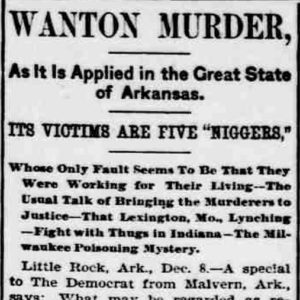 Race Riot Article
Race Riot Article
Entry Category: Law - Starting with R
 Race Riot Article
Race Riot Article
Race Riots
 Racial Strife Article
Racial Strife Article
Ramsey, Dave (Lynching of)
Randolph, John (Lynching of)
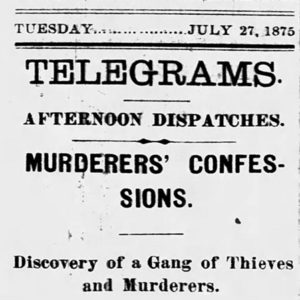 John Randolph Lynching Article
John Randolph Lynching Article
Raney v. Board of Education
aka: Arthur Lee Raney v. Board of Education of the Gould School District
Rector v. United States
Rector, Elias
Rector, Henry Massie
Rector, Rickey Ray (Execution of)
 Reeves Execution Story
Reeves Execution Story
Reeves, Bass
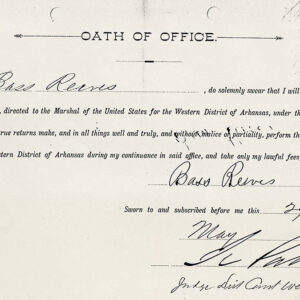 Bass Reeves Oath
Bass Reeves Oath
Reeves, Willis (Execution of)
Reported Smallpox Lynching of 1894
Revenue Stabilization Act
aka: Act 311 of 1945
Reynolds, Dan (Lynching of)
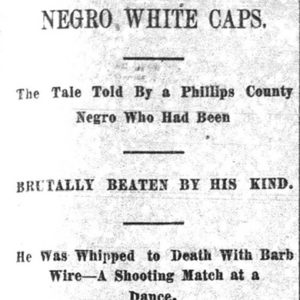 Reynolds Lynching Article
Reynolds Lynching Article
Rhodes, Richard (Hanging of)
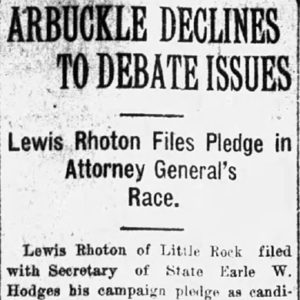 Lewis Rhoton Article
Lewis Rhoton Article
Rhoton, Lewis Nathan
Rice, William (Lynching of)
 William Rice Lynching Article
William Rice Lynching Article
 Adam Richetti
Adam Richetti
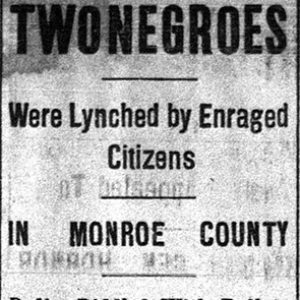 Ricks Lynching Article
Ricks Lynching Article
Ricks, G. W. and Moses (Lynching of)
Riddick, James E.
Rideout, Conrad Alfred
Right to Work Law
aka: Amendment 34
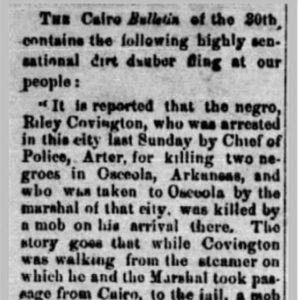 Riley Covington Lynching Article
Riley Covington Lynching Article
Ringo, Daniel
Rison et al. v. Farr
 River Parks Campaign Poster
River Parks Campaign Poster
Roaf, Andree Yvonne Layton
 Robert Williams Execution Article
Robert Williams Execution Article
 Robert Williams Execution Article
Robert Williams Execution Article
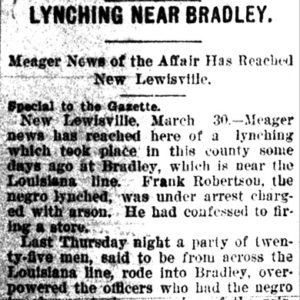 Frank Robertson Lynching Article
Frank Robertson Lynching Article
Robertson, Frank (Lynching of)
Robins, Reuben William (R. W.)
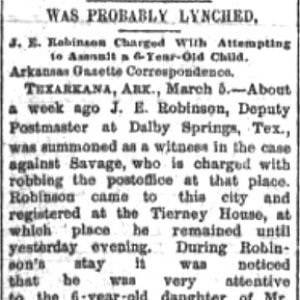 J. E. Robinson Lynching Story
J. E. Robinson Lynching Story
Robinson, Samuel Dunn
 Tommy Robinson
Tommy Robinson
 Tommy Robinson Roast
Tommy Robinson Roast
Robinson, Willis (Lynching of)
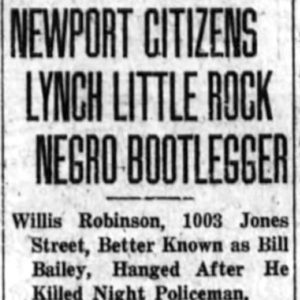 Willis Robinson Lynching Article
Willis Robinson Lynching Article
Rogers, John Henry
 Rolling Stones
Rolling Stones
Rolling Stones, Arrest of the
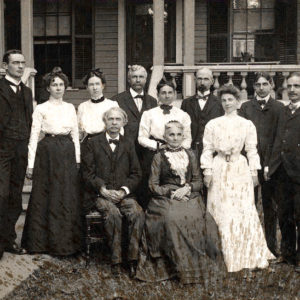 Rose Family
Rose Family




